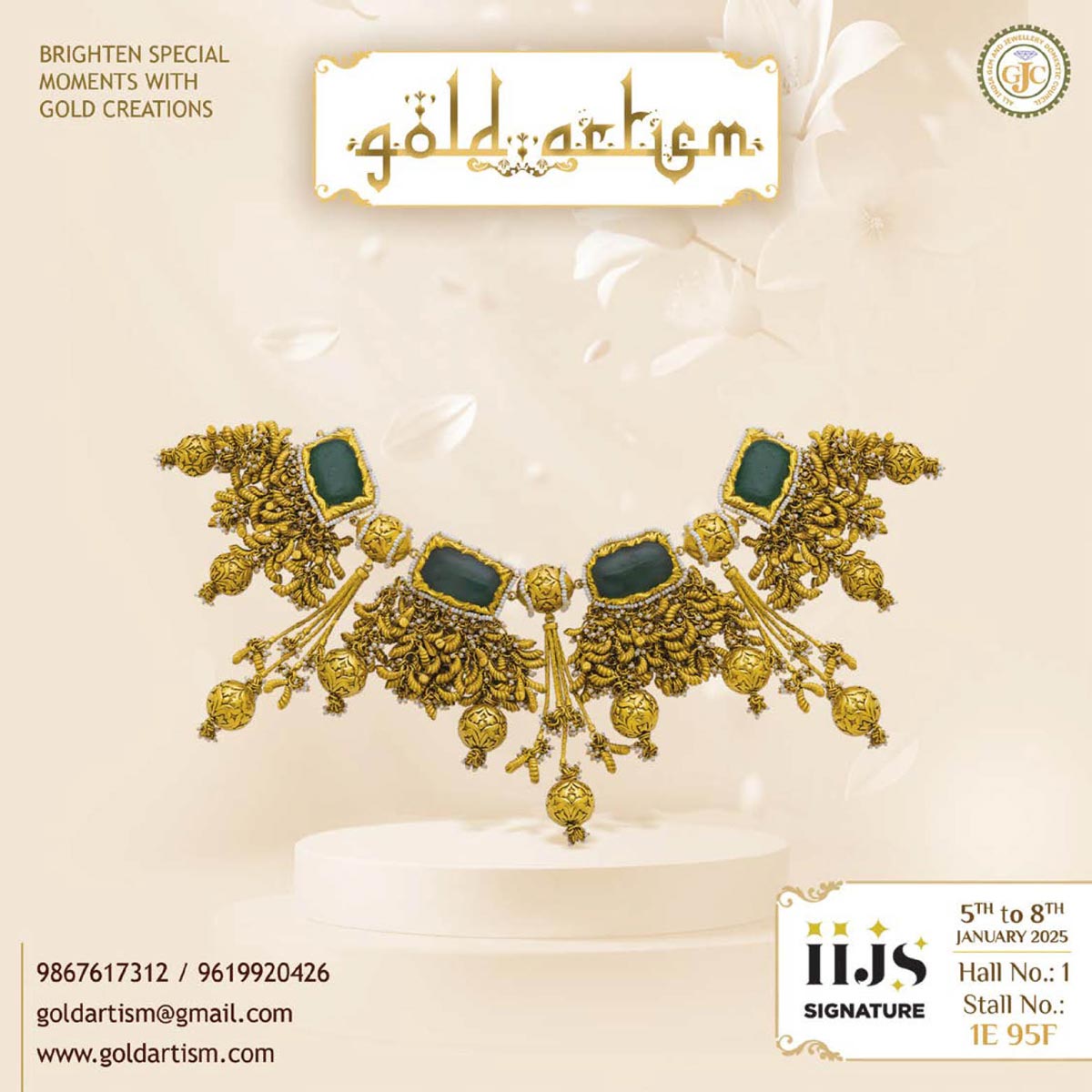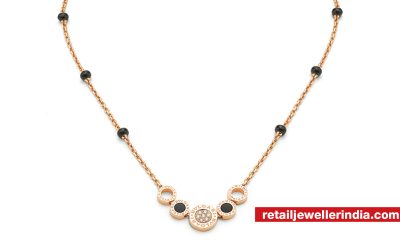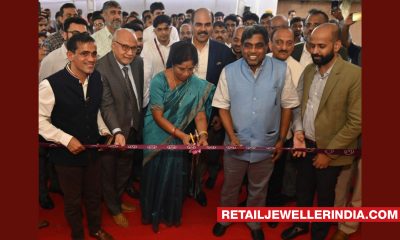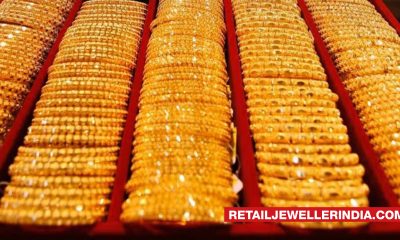RJ Market Watch
Gold Jewellery Making and Migrant Labour Force in Kerala

The gold jewellery industry has become a significant part of the economic and social milieu of Kerala. The massive surge in the demand for it is perceived as a direct consequence of Kerala’s emigration pattern, especially to West Asia, from the late 1970s. With the economic reforms and the deregulation of the gold industry in the early 1990s, this sector has become a lucrative investment opportunity for investors. The government’s policy shift abolished the system of certified goldsmiths and licensed gold dealers and liberalised imports. This arrested the illegal import of gold into the country, facilitated more import of gold through government-authorised sources and nominated commercial banks. Job opportunities increased in proportion to the investment in the gold industry. The new production needs were met largely by workshops that depended on migrant workers. If deregulation allowed for more employment opportunities, it also saw the growth of a new and powerful group of investors who began to control the industry. The traditional goldsmith became a rare entity. Gold retail houses have mushroomed within the state and have pursued an active expansion path outside the country, catering primarily to emigrants from India. The place of the artisan was redefined as he shifted from home-based work to workshops. The rising price of gold and the growth in the retail market present the demand-side of the story of change.
Place of Migration in the Industry
This article conceptualises migrants as members of a peripheral group whose services are manipulated according to the needs of capital. This work is not a source–destination analysis of migration; rather it looks at migrant workers’ position in the labour hierarchy and their nature of work. The flow of inter-state migrants into Kerala in the years post-liberalisation (post-1990s) has been steady. Most of these workers from Northern and Eastern India are engaged as construction workers and unskilled workers. The gold jewellery making industry operates in small workshops, into which access is often difficult. The industry demands services of migrant workers for stone setting, designing, carat testing, soldering, polishing, cutting, etc. Some of the migrants are appointed as managers of small units while others like helpers do the work that locals refuse to. This article thus tries to see how crucial it is to employ migrant workers, how they recreate their own spaces of work, constantly negotiate on the shop floor, and analyses the nuances of workplace policies that arise on the shop floor. The migrant workers include skilled craftsmen from West Bengal, machine workers from Uttar Pradesh (UP) and those in other categories from Maharashtra, Rajasthan and Bihar. Primary data provides information that more than 80% of the workers are from the northern part of India (CDS 2012; Sumeetha 2012). Out of the total migrant workers in Kerala 24.16% in the construction sector are from West Bengal, 17.53% engaged in casual work are from Odisha, 23.48% from Tamil Nadu are employed as domestic workers, 24.16% from West Bengal work in industries and 28.23% from Tamil Nadu are self-employed (CDS 2012).
Designers, cutting and polishing workers, in particular, say that employment in their home towns in jewellery making units is available to them. The differences, however, exist in the wages and the kind of orders they get. Workers from Kolkata mention the small workshops there do provide ample work. For some of the workers, migration is a route to build up their savings, whereas for others like the helpers and those who do soldering it is a desperate survival strategy.
The extensive use of migrants in craft-based occupations in India is not novel. This is as true in the weaving, leather processing, metalwork, and diamond processing industries. All these industries, during their expansion, have largely utilised the services of migrant workers. Related literature amply demonstrates the need for migrant workers, their supply, streams of migration, the nature of migration and their living and working conditions. What remains as a caveat in the literature is that none of the work on migration in India explores the place of migrants in the labour process.
This paper relies mainly on two important works on migration—Burawoy’s analysis of migrant labour in the South African mines and California fields (1976) and Wilson’s analysis of migrants from Mexico to the United States (US) (2012)—to see how an artificial separation of the productive and reproductive spheres of the worker gives capital an overwhelming authority over labour. Even though both these works span different periods, the core ideas articulated remain more or less similar. The two countries in comparison yield no similarities. In Burawoy’s case, the systems in both the US and South Africa externalised the cost of renewal of migrants and extended maintenance of migrant workers through providing for subsistence only.
The employment of migrants has twofold objectives: one that involves a contribution to the production and capital accumulation, and the other that guarantees a flexible workforce that can be recruited and discarded without prior notice. The greatest labour subsidy is realised when the process of production is consciously separated from the process of reproduction and maintenance, that is, when they take place in different social formations. A system of migrant labour is characterised by the institutional differentiation and physical separation of the processes of renewal and maintenance. This debate becomes more nuanced because unless separated by a specific set of political and legal institutions the process of renewal and maintenance tend to coalesce.1
It is primarily on these lines that I visualise the entry of migrants into the gold jewellery industry in Kerala. Though migrant labour from other parts of the country has been flocking into the state since the late 1970s, the gold industry has a history of migration of its own. The specific state regulations pertaining to the industry had a direct impact on the migratory flow to the industry. Migrants came into the industry as workers in new workshops as early as the mid-1960s. But, the spread of migration became rampant only after deregulation of the industry in the early 1990s. The nature of the raw material gold, the rules of recruitment and the hierarchical organisation structure result in the compartmentalising of migrant workers.
Data and Methodology
The empirical data for this paper is based on the findings and observations gathered through fieldwork conducted during a course of three years from 2010 to 2013 in the gold jewellery making industry in Thrissur and Kozhikode (erstwhile Calicut) districts in Kerala. This involved workplace observations and in-depth interviews with different stakeholders in the industry. This work also relies on a larger data set, the Inter-State Migrant Survey, 2013 conducted by the Centre for Development Studies (CDS) in 2012 that collected data on migrant workers in the gold jewellery making from four districts of Kerala (Thrissur, Thiruvananthapuram, Ernakulam and Kozhikode). Subsequent information on the industry was obtained through secondary sources that included reports of the World Gold Council (WGC), National Skill Development Corporation (NSDC), Export–Import Bank (EXIM Bank), Reserve Bank of India (RBI) and Micro, Small and Medium
Enterprises (MSME).2
The two districts chosen for the study were Thrissur and Kozhikode in Kerala. Thrissur has a traditional place in the production of gold jewellery in Kerala as it is considered an important gold jewellery production cluster in Kerala. Kozhikode has emerged as an important production centre as bulk of the investment from West Asia to this industry flows into it. Gold jewellery making is organised in commercial spaces, mostly in single rooms or on the top floors of buildings. Different kinds of units occupy either side of the street called Kamathi Lane in the heart of the city. There are separate units for cutting, polishing, enamelling and purifying gold. Since these units are unorganised and often situated in dingy lanes, access remained a challenge.
I have used key informant interviews, unstructured interviews with local workers, traditional workers, women workers, retailers, senior staff, wholesalers and union leaders. Interpreting the interviewee’s responses entailed developing a method in which the narratives are central to the analysis (Holloway and Jefferson 2000). In-depth, individual, semi-structured interviews tended to yield maximum data because they involved sharing intimate and personal details with the researcher. Negotiations within the workplace and the underlying tone of defiance of the workers, was observed through a prolonged engagement in the workshops. The making of a single piece of jewellery was divided into minute operations and a strict division of labour was observed in all workplaces. Since small units operating with 10 to 12 workers were more welcoming, I could spend more time in these units. Larger units monitored my techniques of observation and were constantly apprehensive about my intentions. CCTVs monitoring my interviews in some units made me extremely cautious about questions posed on the shop floor. More information about the industry was collected through informal engagement with different stakeholders in the industry.
A significant presence of migrant workers was seen in large units (30–45 workers) rather than in small units (10–15 workers) in Thrissur. The dominant presence of migrant workers was also noted in sophisticated units working with imported technology. The intake of workers was mostly dependent on the physical organisation of production. The workshops where fieldwork was carried out broadly fell into these categories—home-based units, large workshops using indigenous technology, sophisticated workshops using imported technology and residential complexes operating as subcontracting units. These included workshops at Poochinipadam, Kuriachira, Palakkaparambu, Allanghad, Saktan, Kattur, Kannamkulangara, Cherpu, Ollur, Chiyarum and Erinjeri Angadi in Thrissur. In Kozhikode, gold jewellery work is organised as a commercial venture in rented buildings at Kamathi Lane. A few workers were engaged in home-based work. However, their scale of operation was quite small. The number in each workshop varied from three or four workers to a 100 or 120 workers, depending on the pattern of production. Workshops with 30 to 35 workers were predominant in Thrissur, while those with 10 to 15 workers were seen more in Kozhikode. Most of the workshops specialised in a single piece of jewellery production. To cite an example from the field, there are workshops that specialise in bangles alone. There are also separate cutting and gold refining units. These are all in close proximity in a single geographical space, as it helps to minimise the time taken to complete orders.
The labour process approach of relying solely on data from the workplace has been criticised (Edwards 2007). The flipside of this methodology is that it generalises particular cases and neglects the wider political economic forces that operate to regulate relations within a firm. One way to solve this problem is to expand the analysis by incorporating the state policies that have direct and indirect bearing on the industry. Another method to correct this lacuna is by incorporating a large data set for reference.
The Inter-State Migrant Survey generated by the CDS in 2012 was in five major sectors across four districts. This included construction, casual work, workers, self-employed, industry workers and domestic workers. Secondary data sources point out that there are about 40,000–45,000 workers (artisans) in this industry in Kerala, out of which 25% are migrant workers. Thus a sample size of 311 workers is justified (out of 11,500 workers, nearly 3% is included in the study). The snowball technique has been adopted where information regarding the whereabouts of migrants was provided by an earlier set of migrants. The sample includes respondents from four districts: Thiruvananthapuram, Ernakulum, Thrissur and Kozhikode. The district-wise break-up is as follows: Thiruvananthapuram (50), Ernakulum (50), Kozhikode (100) and Thrissur (120). The sample is a mix of long-term migrants as well as short-term migrants. The details collected are based on a structured questionnaire. The majority of the workers functioned in small workshops or units that were part of the larger production units. Of the 311 workers surveyed, more than 90% of the migrant workers in the jewellery making industry turned out to be men.
The Process of Recruitment
The industry does not follow formal recruitment procedures and close kin or friends of the employer are preferred. The use of family labour reduces financial burden and the cost of supervision. Recruitment of migrants is carried out through reliable channels that include commissioned agents and experienced workers in the industry. It is practically impossible to get work directly in a workshop. The local workers find jobs directly, though again the “reliability” of the worker is subject to constant checks. The employer is acquainted with most of the local workers and knows their family members. Trust thus plays an important part is obtaining work in the industry.
Unlike in construction, roadwork and other semi-skilled jobs that absorb migrants in large numbers, “gold work” does not allow for the appointment of total strangers in the workshops. All workshops exhibit a pattern in recruitment, wherein migrant workers are related to each other or at least hail from the same village. There are stringent restrictions on movement among specialisations in the industry. Migrants, like local workers, begin work as apprentices, graduate to soldering and then start specialising in any one part of the work.
Mihir, director of ABC Gold, a prominent gold retail establishment said that they had special agents who could source in migrant workers from different states like Odisha, West Bengal and UP. They employ male workers who stay in the workshop itself and prefer not to employ women. A majority of the workers in these workshops are in the age group of 19 to 35 years.
Breman (1996), in his study on south Gujarat workers, observes that the workforce is generally recruited by an agent who is called the mukadam by paying an advance to the head of the migrant team, the palavah, who is in turn responsible for the composition of the migrant workgroup. Once they are inducted into the workplace, their movements and actions are under the close scrutiny of the employers.
Table 1 shows two main paths to enter the labour market in the industry. The first part reveals the mode of migration. About 70% of migrants in this industry travel as a group to Kerala. Migrants travel in groups to seek strength in numbers and personal security on the journey and at labour market places. Locality-based networks of migrants and potential migrants spread information about employment opportunities. Income possibilities are better enhanced by better information on employment possibilities (Rogaly et al 2002).
Composition of the Workforce
The workforce like other craft-based occupations was predominately male. There are local male workers, local women workers, child workers (exclusively migrants), male migrant workers and women migrant workers. The first category of workers are divided into Viswakarma (traditional) goldsmiths and non-Viswakarma workers.
Migrant workers are mainly of three kinds. The majority of the migrants are a very young category of single men. The second category is of child workers. These boys range from the age group of seven to 15 years. The majority of the workshops have a large number of children who work as helpers in the industry. A few experienced migrant workers are appointed as supervisors or managers of the units. Some migrant workers start their own units or organise subcontracting work. Women migrants are negligible in the industry. Most of them have accompanied their husbands to the new destination and assist in home-based orders. Ravindran, the chief executive officer of R K V Jewellers points out that employment of migrant workers in large numbers is a feature of the past couple of years. New recruits are easier to be employed as they are barely given four to five months of training.
Migrant Women Workers
Employers prefer single men who can work and stay in the workplace. Women workers have been incorporated into a male-dominated occupation mostly due to a notion of the creation of a disciplined and docile workforce. The nimble fingers argument proposed to relegate women to soldering and other ancillary activities in the industry. Thus, the “real” work is still man’s work.
In discussions about the Bengal jute industry, Sen (1995) observes that labour became more heterogeneous in terms of castes, communities and, regions and became increasingly a male-dominated organisation. In the case of gold jewellery making units in Kerala, labour was exclusively male in the workshops as well as large mechanised units. Most of the women in the workplaces are local workers and are engaged in almost all divisions except cutting. Migrant women who accompanied their husbands to Kerala assist them in enamelling work. However, men insist that women have very little knowledge about gold work.
Migrant Child Workers
Child workers have been a unique feature of craft-based occupations. The prevalence of child workers in the industry is justified on grounds of a policy of long-term apprenticeship in the occupation. Almost all child workers in the industry are migrants. They are young boys in the age group of seven to 11 years assisting the main workers in the workshops. Their mobility within and outside the unit is severely constrained. They do not even venture out on holidays. Since their work is unskilled they are paid only a pittance and some of them are provided food and accommodation but do not receive wages.
Nature of Work of Migrants
There are three kinds of migrant workers who find their foothold in the industry. The highly skilled workers have arrived after being trained in their home towns and some of these belong to the traditional goldsmith caste. The semi-skilled workers mostly comprise those who have worked in Mumbai, Surat and Delhi and then migrated to Kerala. Others have been trained in workshops in Kerala and have started with soldering. Lakshman, a traditional Viswakarma worker at Kamathi Lane, Kozhikode says:
Very few goldsmiths design traditional jewellery that is in demand for weddings. Most of the big retailers maintain close ties with a traditional worker. Since it is difficult to master traditional work in a short period the number of workers who specialise in it remains limited. Migrant workers specialise in lightweight jewellery that is in demand when gold prices show a rising trend. Migrants and local workers engage in different kinds of work. Some local workers, in course of time, replicate the designs of the migrant workers. None of the migrant workers in fieldwork were engaged in replicating local designs or work. In the workshops they strictly adhere to their own designs.
The manager of a prominent export group highlighted the importance of employing migrant workers in the industry. This manager based in Erinchery, Thrissur said that while hand-worked jewellery is in demand in the export marked, the problem with traditional goldsmiths is that their work is time-consuming. The competitive market cannot afford this and so migrants who work on new designs quickly help in saving time and costs.
Workers from Agra specialise in machine work. There is a dominant presence of local workers in cutting and polishing activities which are allocated to migrants only if they have some prior experience in the industry.
Asim, a 21-year-old worker is a machine-cutting worker. He has been working in Thrissur for the past five years and his position in the labour hierarchy is higher than the other migrants in the workplace. Asim migrated to Jaipur when he was just 14 years old following his father’s death. He is well-trained as a cutter and finds time to help other workers in his workshop.
Traditional goldsmiths keep away from mechanisation because they are more adept in designing ornaments on their own. The migrant worker can easily master machine work since it barely requires a training period of one to two months. Most of them pay for the training in machine work. Paid apprenticeship might be one of the reasons that machine work attracts better wages. Some begin work as maintenance workers of machines and slowly graduate to full-fledged workers.
Segmentation of the Migrant Labour Force
The idea of segmentation is applied in the context of the gold jewellery making industry in that it exhibits capitalist characteristics, situated in a developing world. The traditional competitive labour market analysis sees the labour market as a relatively unified entity. However, in reality, the labour market segments behave differently and mobility between them is restricted (Rosenberg 1989). Gordon et al (1982) analysed the segmentation of the labour force and expanded the concept of duality of the labour market. They argued that capitalist restructuring allows for a division between primary and secondary sectors along with a subdivision of both these sectors. Job specifications would be arranged to isolate workers from each other thereby minimising social contact that would permit continuing social relations during working hours(Gordon et al 1982). Migration does not necessarily have a homogeneous impact on wages and working conditions, rather the effect varies between and within sectors. This depends on the intensity of competition between capitalists, the need for the owners to balance investment in skills against the driving down of wages and the ability of workers to resist capital.
Craft occupations have been segmented along lines of caste and gender. The traditional thattan(goldsmith) belonged to the Viswakarma caste and occupied an important position in the village. The prestige of the thattan grew because he specialised in making temple jewellery and jewellery for the royal family. He had direct access to royal courts that gave him a privileged position. His apprentice would be either a relative or a boy known to him. The tasks were not split into minute operations and therefore the artisan was an expert in all kinds of jewellery making.
Gold jewellery was still associated with a traditional goldsmith and gold retail outlets were not popular until the early 1960s. With big business houses entering the industry in the late 1960s, the Viswakarmas lost ground to the former. The space and sheen offered by the new outlets saw a gradual shift of customers from the traditional worker to the retail shops. The gold jewellery retailers were able to offer ready-made ornaments on a wider scale and at a greater variety. Soon, workers were no longer artisans in the strict sense of the term but wage workers in the new workplace. The labour market was more or less restructured and all religious and caste group workers began to take up gold work. A traditional worker who is also the manager of a migrant unit in Poochinipadam, says that the risk of doing business greatly increased since starting of a unit requires a lot of investment and there are no guaranteed returns. His workshop which earlier had 40 workers has barely 10 workers at the time that he spoke to the author.
Traditional goldsmiths either join as workers in new units or take up alternative jobs after the age of 50.
In the 1990s, following the deregulation of the gold industry, its entire edifice altered. Competition for investing in it not only by local capitalists but also by gold retailers hailing from North India, led to a rapid change in the organisation of gold jewellery work. Most of the wealthy emigrants to West Asia began to redirect their investment to the gold jewellery making industry in Kerala. An increase in work meant an increase in demand for workers. An adequate supply of migrant workers began, with demand for an array of designs.
Thus, labour market segmentation in the industry that was earlier organised along caste lines was now been replaced with segmentation along the lines of migrant and local workers. The working time, incentives, wages, living conditions, etc, reflect the pattern of segmentation in the industry. Segmentation structures are evident on the shop floor too.
Working Time
Quantitative maximisation of output and reduction of the socially necessary labour time dominate the managerial strategy within the capitalist labour process (Cohen 1986). Gold work begins early in the morning and extends up to midnight. Most of the local workers start work at 8.30 am and continue up to 8.00 pm. They get regular breaks for tea and lunch. Cutting and polishing workers have a much more flexible schedule. They work for more than one unit and earn more money. Damodaran, a traditional goldsmith at Kamathi Lane, Kozhikode, says that his earnings are between ₹ 15,000 and ₹ 20,000 per month on an average. But the work according to him is very tedious. His father being a goldsmith had trained him to follow the vocation. He is nostalgic about the time when he and his father used to take orders and work at home. He does not want his son to be a goldsmith as he sees a very bleak future for workers in the industry.
The migrants have a very different schedule. Work begins at 8.00 am, continues until midnight, and at times extends overnight. Most of them barely get three hours of sleep. If there are urgent orders, they work on Sundays too. Women workers who are relatively new in the workplace begin work at 8.00 am and finish work by 5.00 pm. Some women workers who are associated with migrants complete their work at home. Men rarely acknowledge that women help with gold work. Some migrant workers, who live outside the workshops report around 11.00 am, but continue work up to 2.00 am. There are very few breaks on a busy working day. A lunch break of one hour is permitted.
The hours of work that the migrant puts in are much more than local workers. In all workshops, the supervisors/managers occupy prime importance. There are only a few migrants who occupy this position (only 0.1% of migrants are managers). They have autonomy in deciding their working time. Helpers are a category of migrant workers, who have no prior experience in the industry. They are appointed as cooks and after two to three years, join the workplace as full-fledged workers.
At a chain manufacturing unit in Ollur, there are eight migrant workers, all from the same village. Eighteen-year-old Racha who has worked for two and a half years in the same unit, earns ₹ 4,000 for ball making. In his opinion the work can be mastered in six months time. He often works over 12 hours or more and stays in the workshop itself. At times he works throughout the night.
This does not imply that all categories of migrant workers have to spend the same amount of time in the workplace. Cutting and designing workers are the most privileged among them. Munir, who has been a cutting worker for the past 10 years, enjoys a privileged position in the industry as there are no fixed hours of work. He did the same work in Kolkata for which he was paid ₹ 8,000 as monthly wages and earns around ₹ 10,000–₹ 12,000 per month on an average in Kerala. The advantage he sees in being a migrant worker is his potential to save and remit money home.
Payment Structures
Wage differentials are one of the indicators of a segmented labour market. The gold jewellery making industry relies on piece rate payments for all sections of workers, except for managers. Piece rate is an hourly rate in disguise, or more precisely a straightforward rate per minute, only those minutes during which the machines are running are paid for. Piece rate work is focused on production rather than quality. Though the per gram payment reduces the cost of supervision, the workers do not receive any incentive to finish the work. Most workplaces generally take a fixed amount of orders. Only during the festival and marriage seasons, do the orders increase. In the case of migrants, over time work is not given any additional remuneration. Temporary outmigration of young men may reflect the inadequacy of local income earning opportunities and the need to supplement household incomes, but it may also automatically lower household incomes (Standing 1985: 11).
Table 2 indicates the wages of workers and working time in the industry. Even though local and migrant workers are paid on per gram rates, the local workers are paid even when there is no work. This does not happen in the case of migrant workers. Wage differential is of course an important determinant of migration in this industry. While most industries function on the dictum that wages increase with experience, this may not hold true in the case of migrant workers in the gold industry in Kerala.
Jayan Mandal who hails from Howrah district has been doing enamelling work at Thrissur. Back home he worked as an agricultural worker and earned barely ₹ 2,000 in a month. In Kerala, he is paid on per gram basis (₹ 50 to ₹ 100 per gram) and works on five to six grams per day.
Some subcontracting units pay ₹ 22 to ₹ 35 per gram of gold processed. In most workshops, a separate area is demarcated for the production of machine-made jewellery. Design machinery has allowed for the production of new trendy designs, but comes up with only stoneless, lightweight jewellery. Thus the significance of handmade jewellery remains.
The system of receiving advance payment makes the workers indebted to the employer. It also reduces their chances of upward mobility in the industry. Unlike other sectors where advance payments are the norm to enforce a neo-bondage, in the gold industry not many workers receive advances from the employer.
Harvey (2006) sees migration as an important survival strategy because workers are more than mere objects for capital. “Geographical mobility has quite a different meaning for them. It represents the “hope and striving for a better life” (Harvey 2006: 384). Siman Mandal, the younger brother of Jayan Mandal, has been in the gold jewellery industry for 12 to 13 years. He has been working in Thrissur for the past 11 years. He gained experience by working in Kolkata for two years and says that he could barely earn ₹ 4,000 to ₹ 5,000 back home. In Kerala his wages have gone up to ₹ 10,000 per month.
However, the question of whether wage differences alone sustain migration to the industry is debatable. One of the interesting observations from the field was that most of the workers had a similar job in their home towns but often ended up spending their monthly earnings instantly. Some view this kind of migration as a means to augment their saving potential. For others, it is an opportunity to venture out of the confines of the restricting occupations in their villages.
Payment structures for relatively permanent workers who migrate with their families are different. Thirty-five-year-old Naushad stays outside in a rented accommodation with his wife and eight-year-old son. He has been in the industry for 12 years in Thrissur. He says that despite having prior work experience in units in Delhi, Rajasthan and Bengaluru, the offers in the industry have not been lucrative. He earns around ₹ 4,000 in a week and also manages to remit around ₹ 2,000 per month.
Piece rates for gold jewellery work fluctuate according to the complexity and nature of the work involved. His brother, who is not paid wages, assists Naushad. His food and other living expenses are taken care of by Naushad. It is a common practice in the industry that even experienced migrant workers are not paid wages when there are no orders or no sufficient work in the units. For local workers, payments are made even in lean times.
Machine workers are paid wages on the basis of the number of hours they put in for work. Local workers who work on the dyeing machine/rolling machine are also paid time-work wages. Their wages thus are not affected by fluctuations in orders, though in the long run demand fluctuations can affect the wage rates.
Living Arrangements
Integration of the working and living spaces is an arrangement followed while employing migrant workers. Most of the migrant workers live in the workshop itself. Small manufacturing units throughout the country follow such a pattern for it gives the employer the option to exercise control and consolidate his hold over the lives of workers. This is one of the reasons why employees prefer male workers in the industry. Some workers live outside within one kilometre (km) radius of the workshop. Generally, a worker who has been in the industry for a long time brings in his family and stays in a rented house close to the workshop. This house becomes a nodal point for new migrant workers as they are provided accommodation until the new worker finds a suitable workshop that offers him work. Some workers continue to stay in shared quarters as it minimises the cost of living for the migrants.
Another living arrangement for migrant workers is accommodation rented out by the employer himself. This involves a residential complex comprising 10 to 12 families. The work is subcontracted to a head worker who organises production at home, mostly at the ground floor of the building. The majority of the migrants living in this manner have brought their families along with them. In such an arrangement, though the employer provides the living space, the workers pay the monthly rent. The interesting feature of such an arrangement is a lack of community living. Families maintain a strict distance, because they feel none can be trusted with “gold” around. They minimise their visits to each other’s houses and thus keep a safe distance from one another. There are also migrant workers who settle in Kerala. These include carat-testing workers and a few who start independent units. The women workers are mostly associated migrants who live outside with their families. Some of the female workers live in rented houses as a group.
The local workers live in rented houses or their own houses in nearby locations. None of the local workers reside in the workshops. Most prefer to work in a unit near their homes. The local contacts help them to find a job in the industry. In Thrissur, some workers come from the neighbouring Palakkad district. These workers are generally cutting and polishing workers who have lived and worked in mechanised units at Coimbatore. Sundays are a holiday for local workers. For the migrants, too, Sunday is a holiday, but they take up urgent orders on Sundays. The traditional Viswakarma caste group that dominated the industry has more or less abandoned the occupation. One reason is their migration to the Gulf (especially Saudi Arabia) for specialised gold work; another is the difficult conditions of work in the units. The escalating prices of gold make the existence of gold making units difficult. Another noteworthy change peculiar to Kerala is the role of education. Many goldsmiths get their children educated hoping they would procure more fruitful careers.
Migrants and Other Incentives at Work
For migrant workers visiting home becomes a priority. Most of the migrants get a chance to go home during festivals. Nearly 75% reported that they went home during festivals or at least once a year . Carat-testing workers and purifying workers, who have migrated along with their families to Kerala, make annual visits home. Their relatively autonomous operations and influential positions in the industry make it easier for them to stay away from work for some time. Single male migrants also report that they go back home once in a year, usually during festivals. Generally, they do not stay at home for more than two weeks. After 15 days, they report for work again.
The helpers in the industry and child workers rarely go back home. Children go back once in three years. Helpers try to maximise their time spent in the workplaces in order to get profitable employment. Therefore, they cut down on their visits home.
Only 33% of workers who visit home are paid travel expenses by the employer. The majority of the workers make their own travel arrangements. Migrants while visiting home also travel in groups as it provides strength in numbers and ensures personal security on the journey. During festival time, they are paid a festival allowance that ranges from ₹ 500 to ₹ 1,000. Most of the migrants make purchases with this amount. Nearly 64% of the workers surveyed reported that they received festival allowance from their employers (CDS 2012). The only additional payment they receive from the employers is in the form of this festival allowance. Helpers and child workers are not paid any kind of festival allowance or bonus. Thus targets, bonus schemes and wage differentials have the effect of “separating individuals” from one another and “turning them back on themselves” (Knights 1990: 311–12). This causes divisions among workers who see the workplace as individual rather than social spaces.
Health of Migrant Workers
Most workers in the industry report health problems. The crouched positions for long hours lead to back problems and the intricate designing work reduces eyesight. Thus, none can continue the artisanal work after 40 to 50 years of age. Therefore, migrants actively engage themselves in the industry for 10–15 years and then go back to their home towns. Even among the local workers, those above the age of 40 or 50 either take up managerial positions or leave the vocation forever.
About 50% of the respondents said they fell ill in the last one year. Nearly 64% accessed government hospitals. Only 1.3% went home on falling sick (Table 4). The option of going back home is not a viable one, because being away for more than six to seven months and coming back to workshops would place them lower down the labour hierarchy. Moreover, returning sick would be an additional liability to their families, as the employer does not provide them with any benefits while away from the workspace.
Migrants often undertake jobs in the industry which the local workers refuse to do. Gold work involves use of chemicals and extensive use of cyanide for electroplating and soldering work. Laser beam technology used for soldering requires mandatory use of eye gear for protection. However, though most of the sophisticated units have such gear with them, whether workers actually put them to use remains questionable. The use of cadmium in addition to certain solder alloys have been banned in most countries. Cadmium fumes escaping into the atmosphere is “potentially dangerous for the workforce as it produces toxic fumes” (Grimwade 2002: 37–38). In gold jewellery units in Kerala, cadmium is used in large quantities. Since the industry produces fumes from solvents, acids and fluxes used for production, it requires proper ventilation and exhaust systems to be installed in all workplaces. Most of the gold jewellery units in which migrants work were often cramped spaces with no ventilation at all.
Burawoy (1976, 1985) and segmentation theorists depict a long-run trend of increasingly diverse management practices to control labour, thereby ruling out the possibility of workers’ subjective understanding of the workplace. Workers are not passive, but “resistant and indignant, reflecting an intolerance for capitalism gradually challenging it at the point of production and beyond the point of production” (Tanner et al 1992).
The segmentation of the labour market analysis presented so far in this paper has demonstrated the objective conditions of the labour process that plays a significant part in structuring and conditioning migrants in new workplaces. While analysing the objective conditions of work there is a tendency to assign complete authority to capital and thereby silencing labour’s voice. Dissent in the workplace, as well as everyday struggles of labour, alters the working space. This is comprehended through a subjective reading of the labour process. Such an analysis is an attempt to demarcate the place and position of migrants in the labour hierarchy.
Courtesy: Economic&PoliticalWeekly



-

 Daily News2 months ago
Daily News2 months agoBvlgari adds designs to its pathbreaking mangalsutra collection ahead of wedding season
-

 Daily News2 months ago
Daily News2 months agoTrent, a TATA subsidiary, launches lab-grown diamond brand ‘Pome,’ shares surge 7.67%
-

 Daily News2 weeks ago
Daily News2 weeks agoMalabar Gold & Diamonds launches ‘Heritage Show’ in Mangalore, featuring jewellery inspired by Maharanis
-

 Daily News4 weeks ago
Daily News4 weeks agoSavji Dholakia’s visionary water conservation project ‘Bharatmata Sarovar’ reinforces commitment to sustainability















